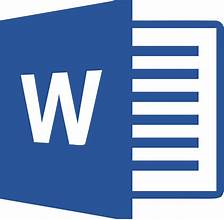CODED VS UNCODED CORRECTIVE FEEDBACK IN TEACHING WRITING DESCRIPTIVE TEXT
DOI:
https://doi.org/10.22460/eltin.v8i1.p%25pKeywords:
written corrective feedback, WFC, writing, descriptiveAbstract
Written Corrective Feedback (WFC) has been in dispute for several decades whether it is effective or ineffective. This study aims at finding out whether there is difference between students who are taught by giving indirect coded feedback and those who are given indirect uncoded feedback. Quasi experimental applied in conducting this research. 35 students in control group were given uncoded feedback, and 35 students in experimental were given coded feedback. The result of descriptive statistic revealed that indirect writing corrective feedback statistically improved the students’ writing score. Furthermore, there was a significant mean difference in students’ score between the students who were given coded and those who received uncoded writing corrective feedback.
References
Agbayahoun, J. P. (2016). Teacher Written Feedback on Student Writing : Teachers ’ and Learners ’ Perspectives. Theory and Practice in Language Studies, 6(10), 1895–1904.
Ahmadi-azad, S. (2014). The Effect of Coded and Uncoded Written Corrective Feedback Types on Iranian EFL Learners ’ Writing Accuracy. Theory and Practice in Language Studies, 4(5), 1001–1008. https://doi.org/10.4304/tpls.4.5.1001-1008
Bhuana, G. P. (2016). The Use of Oral Corrective Feedback for Students of Different Proficiency Levels. In Proceedings: Creativity and Innovation in Language Materials Developement and Language Teaching Methodology in Asia and Beyond (pp. 712–720). Surabaya: University Press Adibuana.
Bitchener, J. (2008). Evidence in support of written corrective feedback, 17, 102–118. https://doi.org/10.1016/j.jslw.2007.11.004
Bitchener, J., & Ferris, D. R. (n.d.). FEEDBACK IN SECOND LANGUAGE ACQUISITION.
Bitchener, J., & Knoch, U. (2009). The value of a focused approach to written corrective feedback, 63(July), 204–211. https://doi.org/10.1093/elt/ccn043
Brown, H. D. (2005). Teaching by Principles. New York: Pearson Education.
Ellis, R. (2009). Corrective Feedback and Teacher Development, 2–18. https://doi.org/10.5070/l2.v1i1.9054
Ellis, R. (2010). Epilogue: A framework for investigating oral and written corrective feedback. Studies in Second Language Acquisition, 32(2), 335–349. https://doi.org/10.1017/S0272263109990544
Eslami, E. (2014). The Effects of Direct and Indirect Corrective Feedback Techniques on EFL Students ’ Writing. Procedia - Social and Behavioral Sciences, 98, 445–452. https://doi.org/10.1016/j.sbspro.2014.03.438
Ferris, D. R. (1999). The Case for Grammar Correction in L2 Writing Classes : A Response to Truscott ( 1996 )’, 8(1), 1–11.
Ferris, D. R., Liu, H., Sinha, A., & Senna, M. (2012). Written corrective feedback for individual L2 writers §. Journal of Second Language Writing. https://doi.org/10.1016/j.jslw.2012.09.009
Ferris, D. R., Liu, H., Sinha, A., & Senna, M. (2013). Written corrective feedback for individual L2 writers. Journal of Second Language Writing, 22(3), 307–329. https://doi.org/10.1016/j.jslw.2012.09.009
Gerot, Linda, and W. P. (1994). No TitleMaking Sense of Functional Grammar. Sydney: Antipodean Educational Enterprises.
Harmer, J. (2001). [Jeremy_Harmer]_How_to_Teach_English(BookFi).pdf. Edinburgh: Pearson Education Limited.
Hughes, A. (2003). Testing for Language Teachers. (S. Michael, Ed.). Melbourne: Press Syndicate.
Hyland, K. (2013). Faculty feedback: Perceptions and practices in L2 disciplinary writing. Journal of Second Language Writing, 22(3), 240–253. https://doi.org/10.1016/j.jslw.2013.03.003
Kennedy, S. (2010). Corrective Feedback for Learners of Varied Proficiency Levels: A Teacher’s Choices. TESL Canada Journal, 27(2), 31. https://doi.org/10.18806/tesl.v27i2.1054
Li, S. (2010). The Effectiveness of Corrective Feedback in SLA: A Meta-Analysis. Language Learning, 60(2), 309–365. https://doi.org/10.1111/j.1467-9922.2010.00561.x
Lyster, R., & Saito, K. (2010). Oral feedback in classroom SLA: A meta-analysis. Studies in Second Language Acquisition (Vol. 32). Kean University. https://doi.org/10.1017/S0272263109990520
Mahmoud, A. (2000). coded corrective feedback in search of a compromise abdulmoneim mahmoud. TESL Reporter 33, 2(2000), 10–17.
Makino, T. Y. (1993). Learner self-correction in EFL written compositions. ELT Journal, 47(4), 337–341. https://doi.org/10.1093/elt/47.4.337
Nurlaila, A. P. (2013). THE USE OF MIND MAPPING TECHNIQUE IN WRITING DESCRIPTIVE TEXT. Journal of English Education, 1(2), 9–15.
Rizqiya, Rissa San; Pamungkas, Mundriyah Yudhi ; Inayah, R. (2017). The Use of P.O.W.E.R. Learning as A Learning Strategy to Improve Students Writing Competency, 11(2), 253–262.
Russell, J., & Spada, N. (2006). The effectiveness of corrective feedback for the acquisition of L2 grammar. In J. Norris (Ed.), Synthesizing Research on Language Learning and Teaching. Philadelphia, PA: John Benjamins. Retrieved from https://books.google.co.id/books?hl=id&lr=&id=980irNw6cnsC&oi=fnd&pg=PT146&dq=The+effectiveness+of+corrective+feedback+for+the+acquisition+of+L2+grammar+&ots=nxL4HKikjV&sig=RmRcZsbqgtSeeUapn9jK7682vqk&redir_esc=y#v=onepage&q=The effectiveness of corrective feedback for the acquisition of L2 grammar&f=false
Saukah, A., Dewanti, D. M. I., & Laksmi, E. D. (2017). The effect of coded and non-coded correction feedback on the quality of Indonesian EFL students’ writing. Indonesian Journal of Applied Linguistics, 7(2), 247–252. https://doi.org/10.17509/ijal.v7i2.8127
Sia & Cheung. (2017). WRITTEN CORRECTIVE FEEDBACK IN WRITING INSTRUCTION : A QUALITATIVE SYNTHESIS OF RECENT, (September). https://doi.org/10.33736/ils.478.2017
Štajner, R. (2013). Analysis of teacher feedback on EFL learner ’ s written production. Osijek.
Sudrajat, A. D. E. (2017). Pengolahan Data Statistik.
Truscott, J. (1996). The Case Against Grammar Correction in L2 Writing Classes, (June), 327–369.
White, H., & Sabarwal, S. (2014). Quasi-Experimental Design and Methods, (8).





